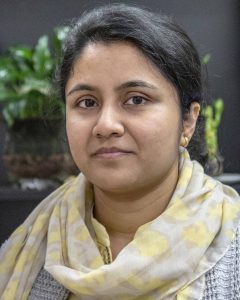Sanjana Hossain, a PhD candidate at University of Toronto, presented her ongoing research in a presentation entitled “Inferring the purpose of using ride-hailing service through Data Fusion of Trip Trajectories, Secondary Travel Surveys and Land Use Attributes” on February 14, 2020. Hossain’s research is supervised by UTTRI associated faculty Professor Khandker Nurul Habib.
According to Hossain, the increasing market penetration of ride-hailing services offered by private transportation companies is making it important to understand why the trips are being made.
Trip purpose information directly relates to the activities for which ride-hailing is used, thereby providing important context of travel demand generated by the services.
In her presentation, Hossain outlines a data fusion method for inferring trip purposes from GPS trajectories of ride-hailing services in Toronto. At its core, it predicts the most probable purposes using only basic trip-related information, such as approximate pick-up and drop-off locations, trip start times, and land use characteristics around the origins and destinations.
The inferred purposes reveal important patterns of ride-hailing trips, which in turn will facilitate efficient urban policy planning.
The seminar was followed by Q & A.

Sanjana Hossain is a PhD Candidate in transportation engineering at the University of Toronto. She works under the supervision of Prof. Khandker Nurul Habib to develop data fusion methodologies for travel demand analysis. She completed her BSc in Civil Engineering and MSc in Transportation Engineering from Bangladesh University of Engineering and Technology.
Presented by University of Toronto ITE Student Chapter, UT-ITE.

